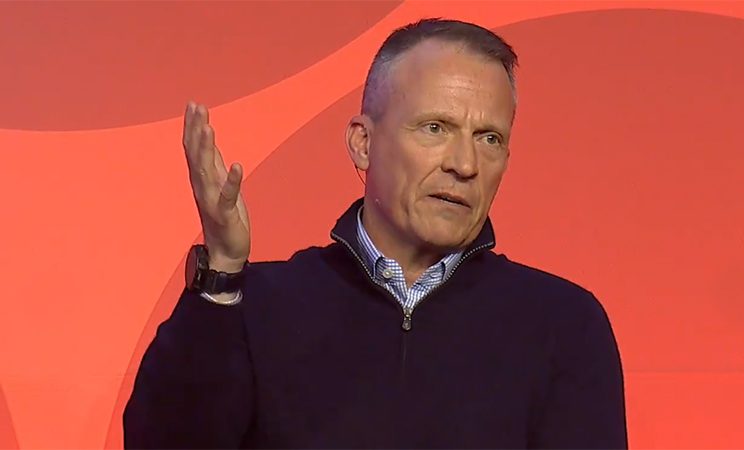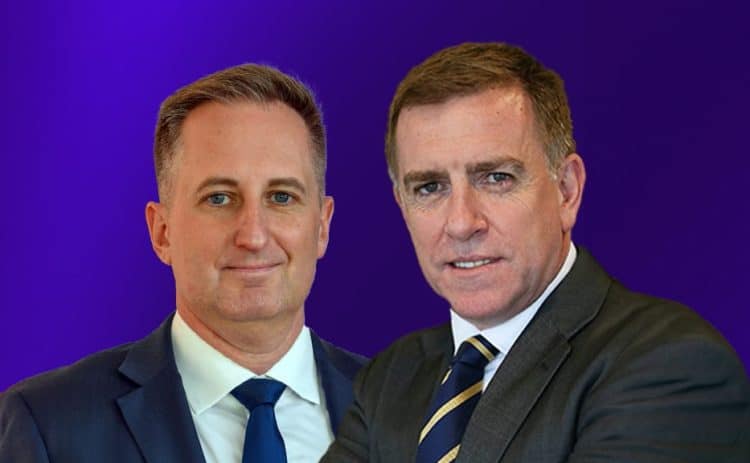Mainstream Online Web Portal
LoginInvestors can view their accounts online via a secure web portal. After registering, you can access your account balances, periodical statements, tax statements, transaction histories and distribution statements / details.
Advisers will also have access to view their clients’ accounts online via the secure web portal.
The Point
Quick, actionable insights for investors
The headlines driving Aussie equities | Falling USD should lift EMs | Where to find opportunities in theme-driven markets
Loading posts...

Elise McKay: The headlines driving Aussie equities this week
Quick view
Elise McKay: The headlines driving Aussie equities this week
Here are the main factors driving the ASX this week, according to Aussie equities analyst and portfolio manager ELISE MCKAY and reported by head investment specialist CHRIS ADAMS
Read Pendal’s latest weekly equities overview.

Crispin Murray: Where to find ASX opportunities amid ‘theme-driven’ market noise
Quick view
Crispin Murray: Where to find ASX opportunities amid ‘theme-driven’ market noise
Share prices are increasingly moved by popular themes like AI disruption, trade wars, and tariff fears – without regard to company fundamentals or long-term valuations.
As a result, quality Australian companies with sound outlooks and predictable cash flows are being indiscriminately sold off.
That’s creating opportunities for active fund managers, Pendal’s head of equities Crispin Murray told Morningstar’s 2025 investment conference in Sydney last week.
“We believe this is creating more distortions in the market. It means the amplitude of mispricing is greater, and it lasts longer.”
Global market dislocation means the ASX has a range of industrial companies with predictable cash flows and returns that have been sold down and offer opportunities for investors, he says.
“One example is CSL – one of Australia’s largest, most successful companies. Five years ago it was running high – at an over-40 multiple. It’s now down to about 22 times earnings,” he says.
Fears of the impact of tariffs on CSL are misplaced, assuming the company doesn’t do anything to respond – “and I think that’s where the market’s overreacting,” argues Crispin.
“We think the risk on the tariff front is being overstated, and that’s what’s providing you the opportunity.” Pendal owns CSL.
Read more

‘Emerging markets crisis’? That’s a wildly overstated view, say our experts
Quick view
‘Emerging markets crisis’? That’s a wildly overstated view, say our experts
Some analysts have described a pattern of a weaker dollar and rising bond yields in the US as a ‘classic emerging markets crisis’.
“As veterans of actual emerging crises dating back to 1994, we consider that view to be wildly overstated,” writes Pendal’s EM team in their latest analysis.
In spite of volatility and weakness in core US financial markets, the currencies of almost all emerging markets strengthened against the US dollar in March and April. Meanwhile bond yields fell for the majority of major EMs.
“Emerging markets are driven by two major global drivers: international capital flows and international trade.
“A weaker dollar represents capital flowing out of the US and into the rest of the world – and a weaker dollar has consistently been positive for emerging markets over the past 30 years.
“Although evolving tariff policies threaten a downturn in global trade, the message from financial markets is that investor uncertainty about US economic policies is a clear positive for emerging economies and for investors in emerging markets.”
Read more

Amy Xie Patrick: China, the US, and the value of uncertainty
Quick view
Amy Xie Patrick: China, the US, and the value of uncertainty
This month’s divergence in US and China rates policies wasn’t just a curiosity for money managers, observes Pendal’s head of income strategies, Amy Xie Patrick.
“It’s a study in contrasts, a reflection of deeper structural differences, and a reminder that policy effectiveness doesn’t always come wrapped in transparency or even democracy,” says Amy in her latest markets analysis.
On May 7, the US Fed left rates unchanged despite growing political pressure. Meanwhile, the People’s Bank of China delivered another dose of stimulus.
“One central bank faced market criticism over its non-committal guidance,” notes Amy. “The other moved swiftly and silently, without needing to justify its decision.
“Perhaps the most contrarian yet valuable takeaway is that less policy guidance may be a good thing.
“By avoiding the hard task of forecasting far into the future, we free ourselves from unhelpful narratives may that turn out to be false.
“By focusing on getting it right rather than always being right, we’re able to preserve the flexibility to change course when the fundamentals change.”
Read Amy’s full article here
Latest updates from our fund managers


Tim Hext: Australia to expect state budget downgrades
June 25, 2025
See all
Emerging markets: Look past commodity exports to countries with strong domestic demand
July 26, 2023
See allSubscribe to The Point
Get regular insights on investing, market analysis and portfolio management from the experts at Perpetual Group.
These podcasts are for general information purposes only, should not be considered as a comprehensive statement on any matter and should not be relied upon as such. They have been prepared without taking into account any recipient’s personal objectives, financial situation or needs. Because of this, recipients should, before acting on the information, consider its appropriateness having regard to their or their clients’ individual objectives, financial situation and needs. The information is not to be regarded as a securities recommendation.
The information in these podcasts may contain material provided by third parties, is given in good faith and has been derived from sources believed to be accurate as at its issue date. While such material is published with necessary permission, and while all reasonable care has been taken to ensure that the information in this presentation is complete and correct, to the maximum extent permitted by law neither Pendal nor any company in the Pendal group accepts any responsibility or liability for the accuracy or completeness of this information.
Any projections contained in these podcasts are predictive and should not be relied upon when making an investment decision or recommendation. Whilst we have used every effort to ensure that the assumptions on which the projections are based are reasonable, the projections may be based on incorrect assumptions or may not take into account known or unknown risks and uncertainties. The actual results may differ materially from these projections.
Performance figures are calculated in accordance with the Financial Services Council (FSC) standards. Performance data (post-fee) assumes reinvestment of distributions and is calculated using exit prices, net of management costs. Performance data (pre-fee) is calculated by adding back management costs to the post-fee performance. Past performance is not a reliable indicator of future performance.
For more information, please call Customer Relations on 1300 346 821 8.00am to 6:00pm (Sydney time) or visit our website www.pendalgroup.com

Tim Hext: In bonds, the trend is your friend
There’s been a few false starts when it comes to the turning point for the current economic cycle, but now it’s the real deal, says Pendal’s head of government bonds, Tim Hext.
“It is very difficult to pick the very top or very bottom in yields. What is easier is to look at the trend. Are rates going up or are they going down?” Hext asks.
“When the central bank starts hiking or cutting benchmark rates, the bond market has already moved. But that doesn’t mean the moves in bond yields have gone as far as they are going to go. The changes in benchmark rates continue the trend. They don’t end it.”

Sondal Bensan: What’s driving the ASX this week?
Quick view
Sondal Bensan: What’s driving the ASX this week?
A SOFT LANDING is increasingly accepted as the most likely outcome in the US, with inflation-related data in check and the labour market not showing any material incremental deterioration.
Last week, we went from the market pricing next-to-no chance of a 50-basis-point (bp) cut by the Fed following Wednesday’s CPI data, back to an almost 50% chance of a 50bp cut by week’s end.
This drove equities higher and gold to new highs. The S&P 500 rose 4.06%, the NASDAQ was up 5.98%, and Australia’s S&P/ASX 300 was up 1.48%.
Here’s Sondal Bensan with the main factors driving the ASX this week – read more.

Emerging Markets: Where to look for investment opportunities in Asia
Quick view
Emerging Markets: Where to look for investment opportunities in Asia
Asian economies are shaking off China’s slowdown and showing signs of renewed vigour, sparked by a wave of tech innovation and a global trend to supply-chain diversification.
That’s the view of Ada Chan, a portfolio manager with Pendal’s emerging markets team and Samir Mehta, who leads Pendal’s Asian shares strategy.
Renewed optimism for Asia is a reminder to avoid the trap of assuming temporary challenges are here to stay, says Samir.
“Headlines about tariffs and geopolitics are all we hear of.
“But each and every company we meet with is reacting in a different manner, adjusting and getting more competitive to deal with these challenges.
“All the company meetings we do and the managers we meet make us reasonably confident that if liquidity conditions get better – which is the potential in the next 12 to 18 months – Asia could be well set for a decent run in terms of economic activity and potentially even stock market performance.”
In this article, Samir and Ada explain how to find investment opportunities in China, Taiwan, Korea and India – read more.

Crispin Murray: What we learned from ASX earnings season
Quick view
Crispin Murray: What we learned from ASX earnings season
MARKETS continued trailing back toward their July highs last week, driven by commentary from Federal Reserve Chairman Jay Powell.
Powell expressed confidence that a soft landing is achievable and said that the Fed would focus on keeping the labour market strong as it makes progress towards its inflation target.
The “Fed put” is back in terms of monetary policy, providing important insurance against recession risk.
US bonds rallied and the market is now pricing in a roughly 50% chance of a 50 basis point (bp) rate cut in September.
The US Dollar weakened, which is supportive for risk assets, and crypto rallied, indicating that liquidity is coming back to markets.
The S&P 500 gained 1.47%, while the S&P/ASX 300 finished up 0.90%.
The main check on equities is the fear of September, which is seasonally the weakest month.
Local earnings results remain supportive, albeit with some pockets of weakness which tend to reflect specific industry issues rather than broader economic malaise.

Amy Xie Patrick: Five strategies to navigate late-cycle markets
Quick view
Amy Xie Patrick: Five strategies to navigate late-cycle markets
Late-cycle dynamics can be tricky to navigate. Here are five tactics Pendal’s head of income strategies AMY XIE PATRICK is considering for the path ahead – read more
What the latest GDP data tells us | Opportunities in small caps and Chinese equities | AI chip-maker takes a tumble

Aussie equities: Opportunities in ASX small caps as rate cuts loom
Relative underperformance in the small cap category doesn’t bother experienced, active stock-pickers like Pendal’s Lewis Edgley and Patrick Teodorowski.
“By being dynamic and identifying better-quality smaller companies we’ve been able to navigate that and find money-making ideas,” says Lewis.
“We’ve been able to identify two groups of businesses: structural-growth businesses that we were able to put more capital in at a better valuation; and businesses with more defensive earnings than the market thought, which have rebounded significantly.”
Still, the sector should receive a broad boost when interest rate cuts arrive.
Small caps are historically correlated to changes in interest rates.
“We have a blueprint for this in many cycles, whether it’s the GFC or Covid,” says Lewis.
“Declining interest rates are usually a tailwind for small caps relative to large caps.
“Over the last two or three years, small caps have essentially been driving with the handbrake on.
“We don’t know when rates are going to start coming off. But when they do, small caps should start to get a tailwind.”
Read the full article
Loading posts...
Subscribe to The Point
Get regular insights on investing, market analysis and portfolio management from the experts at Perpetual Group.








